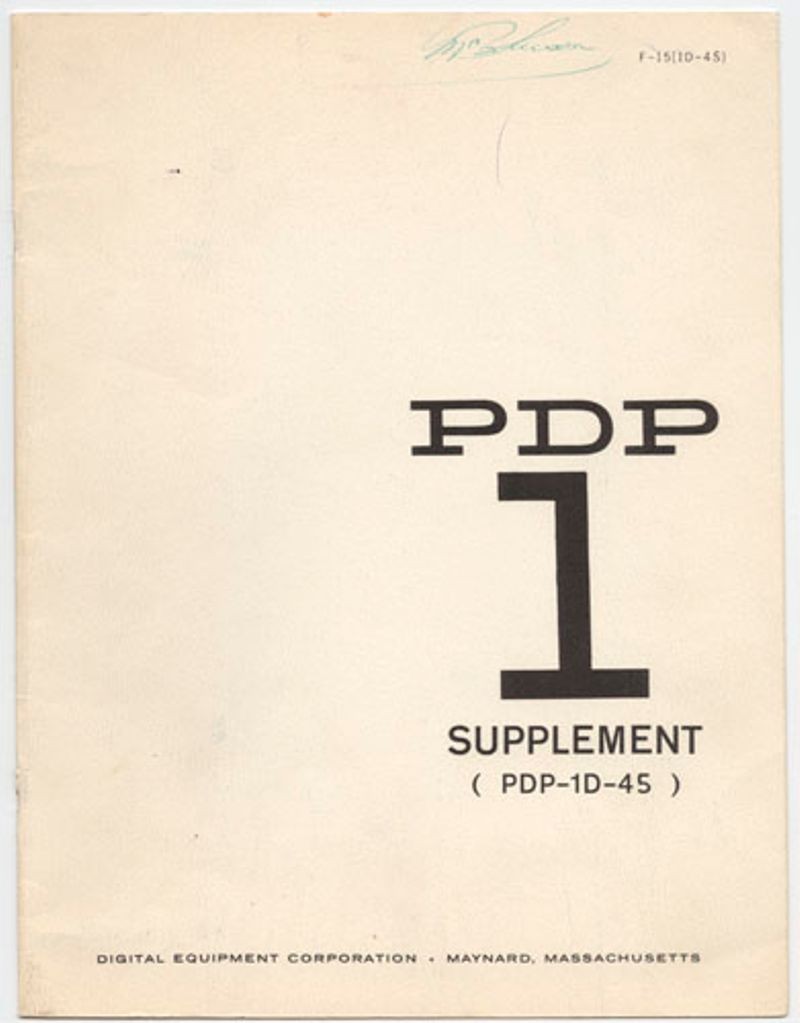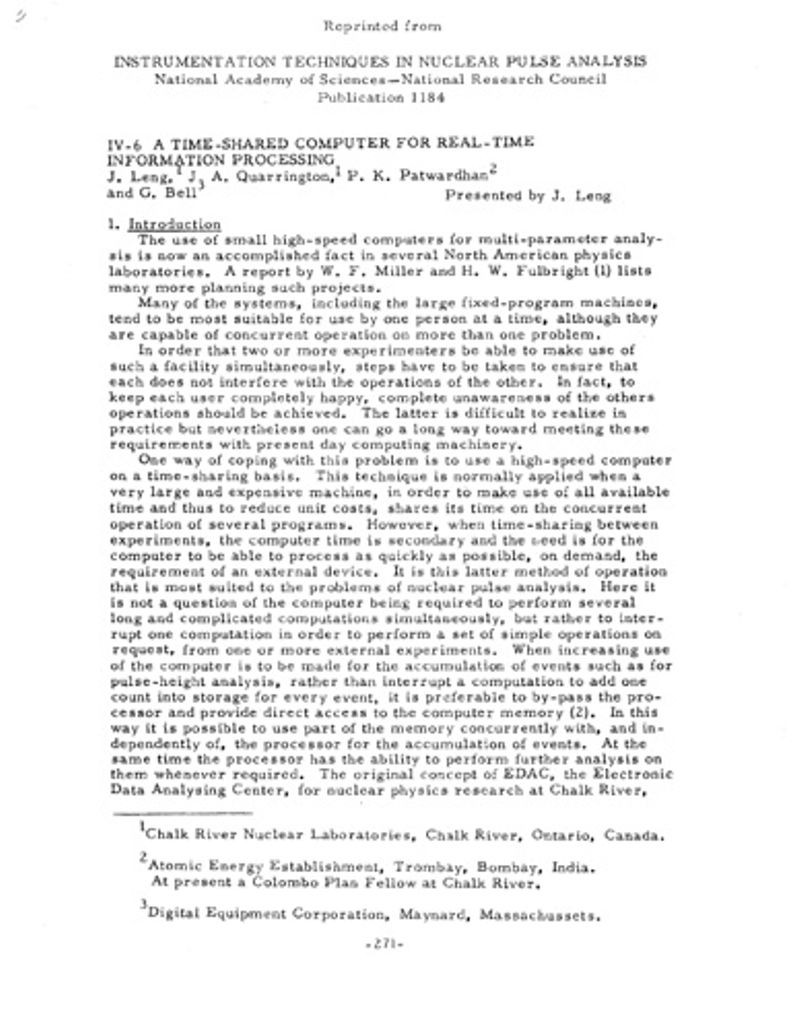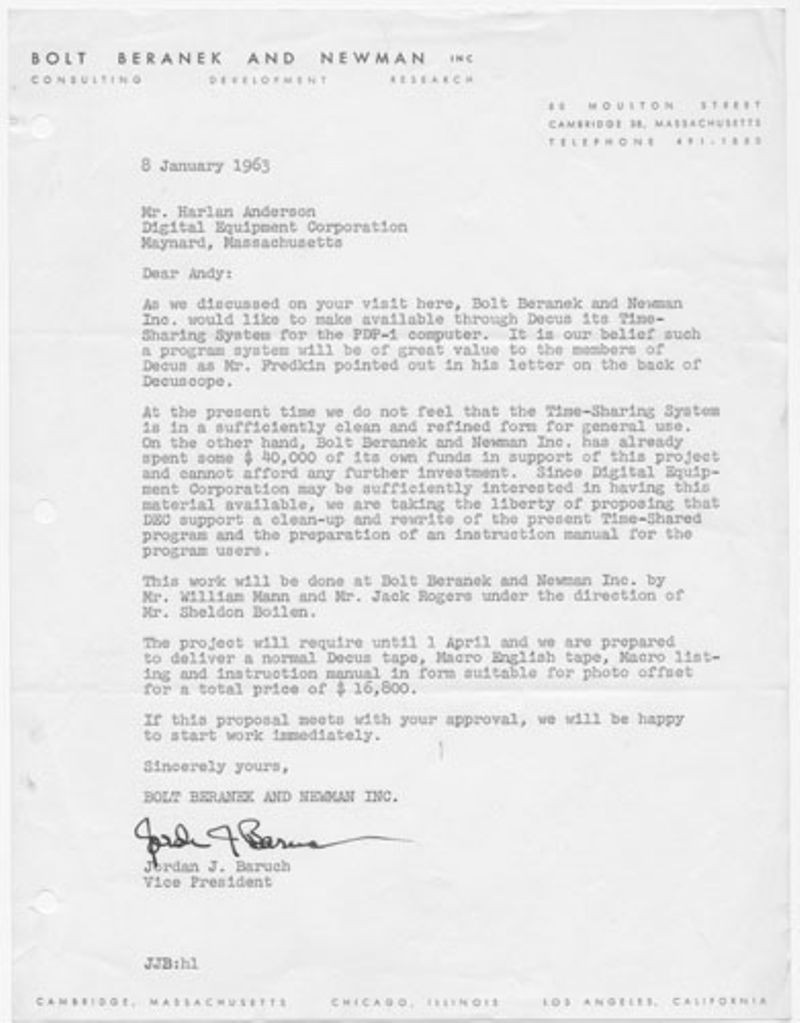Timesharing

Timesharing is a way for many users to have the illusion that they have sole access to, and the full attention of, a computer. Timesharing emerged in the early 1960s as a response to the cost of computer time on mainframe computers and on the inconvenience of batch mode computing which required that users adapt their schedules to that of the machine.
With its roots at MIT, timesharing on the PDP-1 was a logical extension of the interactive mode of computing popular there in which users had complete control over a machine. It had many of the features seen in MIT’s multi-million dollar experimental systems—TX-0, TX-2 and Whirlwind—but at a fraction of the cost, including: user switches, a graphics monitor, a light pen, a paper tape reader and punch and soon a typewriter.
Rather than giving a user complete control over the machine, however, a magnetic drum memory was added to the PDP-1 to allow the work of several users to be ‘swapped’ out to this drum while the computer switched to another user and then swapped back in to memory when it was the first user’s time again. In September 1962, BBN, an acoustics research firm in Boston, demonstrated this timesharing system on the PDP-1 they had purchased the year before, the first PDP-1 DEC made. The system was developed by Ed Fredkin (BBN) and Jack Dennis (MIT) and was in operation for student use until the mid-1970s. A similar system at Stanford University also provided many useful insights into timesharing.





